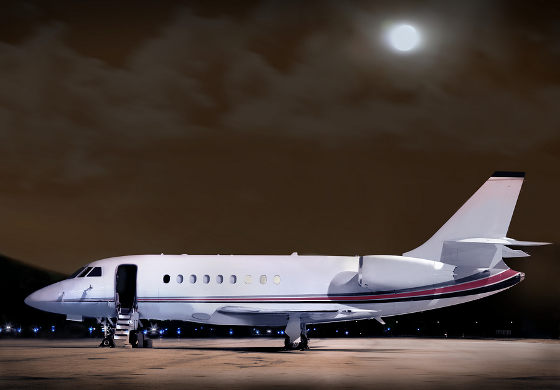Flying internationally always requires more planning than domestic travel, even when flying on private aircraft. Before leaving, be sure to know what all of the specific rules are. Your aircraft operator or broker will help, but here are some general guidelines for flying internationally on private aircraft.
When flying back to the United States from say Mexico or the Caribbean, flights must stop and clear customs at the first "point of entry" airport on the route back. Since not all airports are considered point of entry airports, it may result in a special stop on the journey home. Flights arriving from Canada have more options for arrival. Regardless of where you are coming from, the customs process is so much easier than at commercial airports, since custom officials come directly to the aircraft and clear the passengers. There are no lines and the process is usually quicker.

When flying outside of the United States, passengers need to be cleared by immigration prior to departure. Some companies require just several hours notice, while others need 48 hours. Be sure to check with your company before making last-minute plans. Just as with commercial airlines, all travelers need a valid passport, including children, as well as any required visas. Travelers will also need to make the usual declarations about imports and are subject to the same customs restrictions, and will be required to pay applicable duties.
Most private airlines don't have specific baggage restrictions, except for the weight and size guidelines determined by the specific aircraft. The baggae space can vary a lot between aircraft, although the larger aircraft which are typically used for international travel certainly have more space. This earlier article will give you a feel for the luggage space avilable in private jets. Liquids are typically acceptable, and pets are allowed, subject to the destination country's rules. For longer flights, it's even more important to know the guidelines for traveling with pets on private aircraft, so they arrive safely.
The "primary service areas" for the large US based fractional operators typically extend a few hundred miles into Canada, Mexico and the Caribbean. Trips beyond these areas start to incur additional fees, so always check on any incremental fees. For international charter flights, all the fees and costs should be included in the quote from your operator or broker. You can read about the main charter fees and invoice charges here. For instance, if you travel further you may have to pay for the crews overnight fees, as they rest up in a local hotel before the return trip.
As with any other guidelines, it's important to check with your provider prior to planning your trip, so you know about the latest fees, recommendations and regulations.

